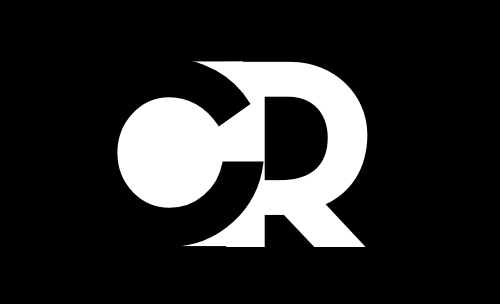How to find high-paying jobs on LinkedIn?

Finding high-paying jobs on LinkedIn isn’t just about scrolling through listings it’s about strategy. With millions of professionals and top employers active on the platform, LinkedIn offers unmatched opportunities for career growth. However, landing a lucrative role requires more than a basic profile; you need a targeted approach to stand out, connect with the right people, and position yourself as a top candidate.
This guide will walk you through proven steps to find high-paying jobs on LinkedIn, from optimizing your profile for visibility to leveraging networking and advanced search techniques. Whether you’re looking to switch careers or climb the corporate ladder, these actionable tips will help you unlock better opportunities and negotiate the salary you deserve.
Optimize Your LinkedIn Profile for Maximum Visibility
Your LinkedIn profile isn’t just an online resume it’s your personal brand. If you want to attract high-paying jobs, you need to make sure recruiters and hiring managers can easily find you and recognize your value. A well-optimized profile doesn’t just list your experience; it tells a compelling story of your expertise and career potential. Here’s how to make yours stand out:
1. Craft a Strong Headline (Beyond Just Your Job Title)
Your headline is the first thing people see in search results. Instead of just stating your current role (e.g., “Marketing Manager at XYZ Corp”), make it keyword-rich and achievement-focused. Example:
✅ “Digital Marketing Strategist | Helping Brands Scale Revenue with Data-Driven Campaigns | Ex-Google, Meta”
This instantly highlights your expertise, industry relevance, and past credibility.
2. Write a Powerful “About” Section
This is your elevator pitch. Instead of a dull summary, structure it like this:
- Opening Hook – A strong statement about your expertise.
- Key Achievements – Quantifiable wins (e.g., “Increased sales by 200% in 6 months”).
- Skills & Industry Focus – Mention high-demand skills (AI, leadership, etc.).
- Call to Action – Invite recruiters to connect (e.g., “Open to senior leadership roles in tech—let’s connect!”).
3. Showcase Experience with Results, Not Just Responsibilities
Recruiters care about impact. Instead of:
❌ “Managed social media accounts.”
Write:
✅ “Grew LinkedIn followers from 5K to 50K in 12 months, driving a 30% increase in leads.”
4. Add Relevant Skills & Get Endorsements
- List hard skills (SEO, Python, Salesforce) and soft skills (Leadership, Negotiation).
- Get at least 5 endorsements for key skills to boost credibility.
5. Use a Professional Profile Photo & Banner
- Photo: High-quality, professional, friendly expression.
- Banner: Customize it—add a tagline, services, or a branded background.
6. Turn on “Open to Work” (But Do It Strategically)
- Public Mode: Lets recruiters know you’re open to opportunities.
- Private Mode: Only visible to recruiters if you’re discreetly looking.
7. Get Recommendations
Ask former managers, colleagues, or clients to write specific, detailed recommendations about your work.
Use Advanced Search Filters to Find High-Paying Roles
LinkedIn’s job board contains countless opportunities, but the real gems are often hidden beneath the surface. To find high-paying roles efficiently, you need to move beyond basic searches and master LinkedIn’s advanced filters. This way, you won’t just stumble upon jobs you’ll pinpoint the best ones strategically.
1. Start with the Right Keywords
Instead of generic searches like “Marketing jobs,” refine your query with:
- Job titles (e.g., “Senior Product Manager”)
- Salary-related terms (e.g., “high-paying,” “competitive salary,” “six-figure”)
- Industry-specific skills (e.g., “AI-driven marketing roles”)
2. Leverage LinkedIn’s “Jobs” Advanced Filters
When searching for jobs, use these filters to narrow down high-paying opportunities:
✔ Experience Level – Select “Director,” “Executive,” or “Senior Level” to filter out entry-level roles.
✔ Date Posted – Choose “Past 24 hours” or “Past week” to apply early (when competition is low).
✔ Salary Range – Some job posts disclose salary; filter for *”$100,000+”* or your target range.
✔ Job Type – Focus on “Full-time,” “Remote,” or “Hybrid” based on your preference.
✔ Company Size – Larger companies (10,000+ employees) often offer higher salaries.
3. Use Boolean Search for Precision
Combine keywords with AND, OR, NOT to refine results. Examples:
- “VP Sales AND (SaaS OR Tech)”
- “Data Scientist NOT Intern”
- “Remote AND (Blockchain OR AI)”
4. Follow High-Paying Companies & Set Alerts
- Follow target companies (FAANG, top startups, Fortune 500) to see their job posts first.
- Enable job alerts for specific roles so LinkedIn notifies you of new openings.
5. Check the “Easy Apply” vs. Company Website Strategy
- “Easy Apply” jobs are convenient but often competitive.
- Roles directing to company websites may have fewer applicants prioritize these.
6. Research Salary Trends with LinkedIn Salary Insights
Before applying, check:
- LinkedIn Salary Tool (if available in your region)
- Glassdoor & Levels.fyi for compensation benchmarks
Leverage Networking and Engage with Recruiters
The hidden job market where high-paying roles are filled through referrals and direct outreach is where real opportunities thrive. On LinkedIn, who you know (and who knows you) can fast-track your career more than any job application. Here’s how to strategically network and build relationships with recruiters and industry leaders.
1. Optimize Your Profile for Recruiter Searches
Before networking, ensure recruiters can find you:
✔ Use industry keywords in your headline, About, and Experience sections.
✔ List in-demand skills (AI, cloud computing, leadership) to appear in recruiter filters.
✔ Keep your profile public with “Open to Work” enabled (if actively job hunting).
2. Connect with the Right People
- Recruiters & Hiring Managers: Search for “[Your Industry] Recruiter” or “Talent Acquisition [Your Field]” and send personalized invites.
- Industry Leaders & Peers: Follow and engage with executives at target companies.
- Alumni Network: Use LinkedIn’s “Alumni Tool” to connect with professionals from your school.
Pro Tip: Always personalize connection requests mention a shared interest, mutual connection, or specific reason for connecting.
3. Engage with Content Strategically
Recruiters notice active profiles. Boost visibility by:
✅ Commenting intelligently on posts by industry leaders (add value, not just “Great post!”).
✅ Sharing insights (case studies, trends, or quick tips related to your expertise).
✅ Posting original content (articles, career milestones, or thought leadership pieces).
4. Send Warm Outreach Messages
When reaching out to recruiters or hiring managers:
- Be concise and direct (they’re busy).
- Highlight a mutual connection or interest (e.g., “I noticed you work at [Company]—I’ve been following their work in [X] and would love to learn more.”).
- Ask for advice, not a job (e.g., “Would you have 15 minutes to chat about trends in [Industry]?”).
5. Join and Participate in LinkedIn Groups
Groups related to your field are goldmines for:
✔ Job postings (some recruiters post exclusively in groups).
✔ Networking (commenting in groups increases visibility).
✔ Industry insights (stay updated on trends to discuss in interviews).
6. Follow Up with Recruiters (Without Being Pushy)
If a recruiter views your profile or you’ve applied to a role, send a polite follow-up:
“Hi [Name], I noticed you viewed my profile I’ve applied for [Role] at [Company] and would love to discuss how my experience in [X] aligns with your needs. Would you be open to a quick chat?”
7. Leverage Employee Referrals
If you have a connection at a target company, ask:
“I’m really interested in [Role] at [Company] would you be comfortable referring me or sharing advice on the hiring process?”
(Many companies offer referral bonuses, so it’s a win-win.)
Networking isn’t about collecting connections it’s about building relationships that lead to opportunities. By engaging authentically and positioning yourself as a valuable candidate, you’ll tap into unadvertised, high-paying roles.
Showcase Your Expertise with Engaging Content

On LinkedIn, content is currency. Passive profiles get overlooked, while those who actively share insights attract recruiters, hiring managers, and lucrative opportunities. High-paying roles don’t just go to qualified candidates they go to visible experts who demonstrate their value. Here’s how to use content to position yourself as a top-tier professional.
1. Define Your Personal Brand
Before posting, ask:
✔ What do I want to be known for? (Leadership? AI innovation? Sales growth?)
✔ Who’s my audience? (Recruiters, CEOs, peers in your industry?)
✔ What unique perspective can I offer?
Your content should reinforce one core message about your expertise.
2. Post High-Value Content (That Doesn’t Feel Like Bragging)
Avoid vague updates (“Excited to start a new role!”). Instead, share:
✅ Case studies – “How we boosted retention by 40% in 3 months [thread].”
✅ Industry trends – “3 ways AI is changing marketing in 2024 what most companies miss.”
✅ Career lessons – “The one skill that accelerated my salary growth (not what you think).”
Pro Tip: Use hooks in your first line to grab attention (e.g., “Most resumes get rejected for this simple reason…”).
3. Use Multimedia to Stand Out
- Carousels – Break down complex topics into slides (high engagement).
- Videos – Short clips (1-2 min) sharing tips or quick wins.
- Infographics – Visualize data or processes (easily shareable).
4. Engage in Meaningful Conversations
Commenting > Liking. When engaging:
✔ Add value – Don’t just say “Great post!” share an insight or question.
✔ Tag relevant people – “This reminds me of @Name’s work on X what do you think?”
✔ Reply to comments on your posts – Build relationships with engaged followers.
5. Write LinkedIn Articles (For Long-Form Authority)
Publishing articles on LinkedIn:
✔ Boosts SEO (Google indexes them).
✔ Shows deep expertise (vs. quick posts).
✔ Gets shared more widely (extending your reach).
Example Topics:
- *”The Hidden Hiring Criteria for $200K+ Tech Roles.”*
- “How I Negotiated a 50% Salary Increase Without Quitting.”
6. Share Wins (Without Sounding Arrogant)
Instead of “I’m so proud to win this award!”, frame it as value:
✅ “Honored to receive [Award] here are 3 lessons I learned along the way that might help others.”
7. Be Consistent (Without Burning Out)
- Minimum: 1-2 high-quality posts/week.
- Optimal: 3-4 posts + daily engagement.
- Use scheduling tools (Buffer, Hootsuite) if needed.
Your content is your 24/7 sales pitch to high-paying employers. By sharing insights strategically, you’ll stay top of mind for recruiters and position yourself as the obvious choice for premium roles.
Apply Strategically and Follow Up Effectively
Landing a high-paying job isn’t about spraying applications everywhere – it’s about precision targeting and professional persistence. Here’s how to maximize your application success rate while maintaining your professional brand:
1. Quality Over Quantity
- Focus on 5-10 dream companies per week rather than mass-applying
- Spend 30+ minutes tailoring each application
- Look for roles where you meet 80%+ of requirements (don’t self-reject!)
2. The 3-Step Application Strategy
- Research Phase:
- Study the company’s recent news/press releases
- Review the hiring manager’s LinkedIn profile
- Check employee reviews on Glassdoor
- Customization Phase:
- Adjust your resume keywords to match the job description
- Modify your LinkedIn headline to reflect the role
- Prepare a 30-second “why me” pitch
- Submission Phase:
- Apply through company website when possible
- Message the recruiter/hiring manager within 24 hours of applying
3. Crafting the Perfect Follow-Up
First Follow-Up (3-5 days after applying):
“Hi [Name], I wanted to follow up on my application for [Position]. After learning more about [Company]’s work in [Specific Project/Initiative], I’m even more excited about the opportunity to contribute my experience in [Relevant Skill]. Would you be available for a brief conversation this week?”
Second Follow-Up (7-10 days later):
“Hi [Name], I understand how busy hiring timelines can be, but I wanted to reiterate my strong interest in [Position]. I believe my recent success in [Specific Achievement] could bring immediate value to your team. Please let me know if you need any additional information from my end.”
4. Tracking Your Applications
Create a simple spreadsheet tracking:
- Company/role
- Date applied
- Contact person
- Follow-up dates
- Application status
- Key details about the position
5. Handling Rejections Professionally
Always respond to rejections with:
“Thank you for the update. While I’m disappointed, I truly appreciate the opportunity to have been considered. Please keep me in mind for future roles that align with my background in [Skills]. Wishing you and the team continued success.”
This keeps the door open for future opportunities.
Strategic applications with thoughtful follow-ups demonstrate both your interest and professionalism. Remember – high-paying roles often go to candidates who show persistent yet polished pursuit, not just qualified ones.
Final Thoughts
Landing a high-paying job on LinkedIn isn’t about luck it’s about strategy, persistence, and smart positioning. By optimizing your profile, leveraging advanced search techniques, building meaningful connections, showcasing your expertise, and applying with precision, you’re not just looking for opportunities you’re attracting them.
Remember, the best candidates don’t just qualify for high-paying roles they stand out as the obvious choice. Whether you’re negotiating your salary or crafting the perfect follow-up, every step should reinforce your value. Now, it’s time to take action. Update your profile, engage with purpose, and start applying these tactics today. Your next career breakthrough is closer than you think.






